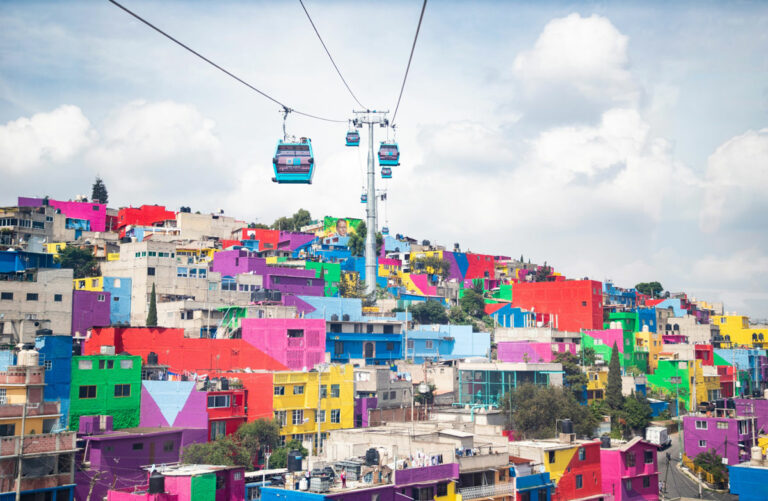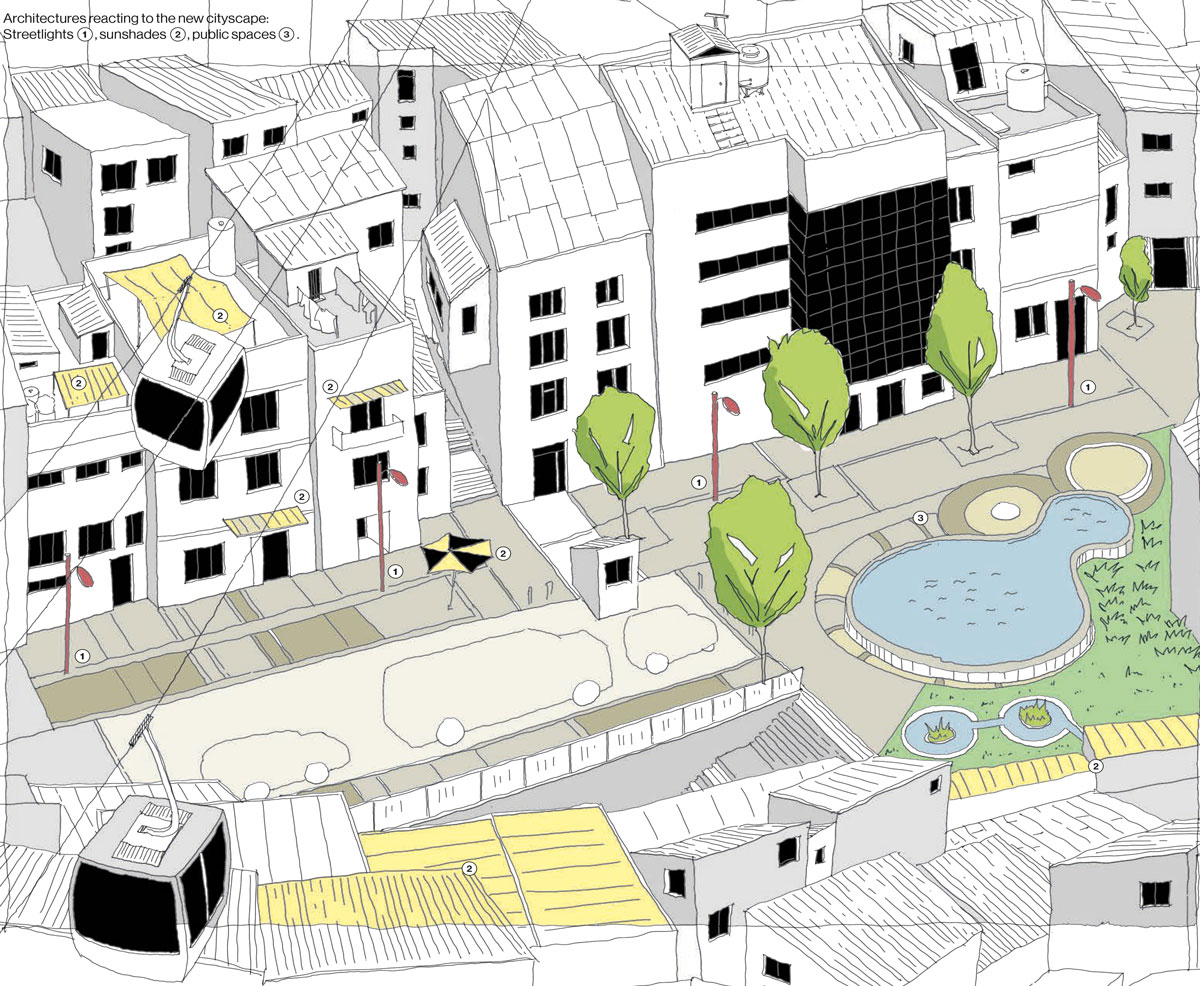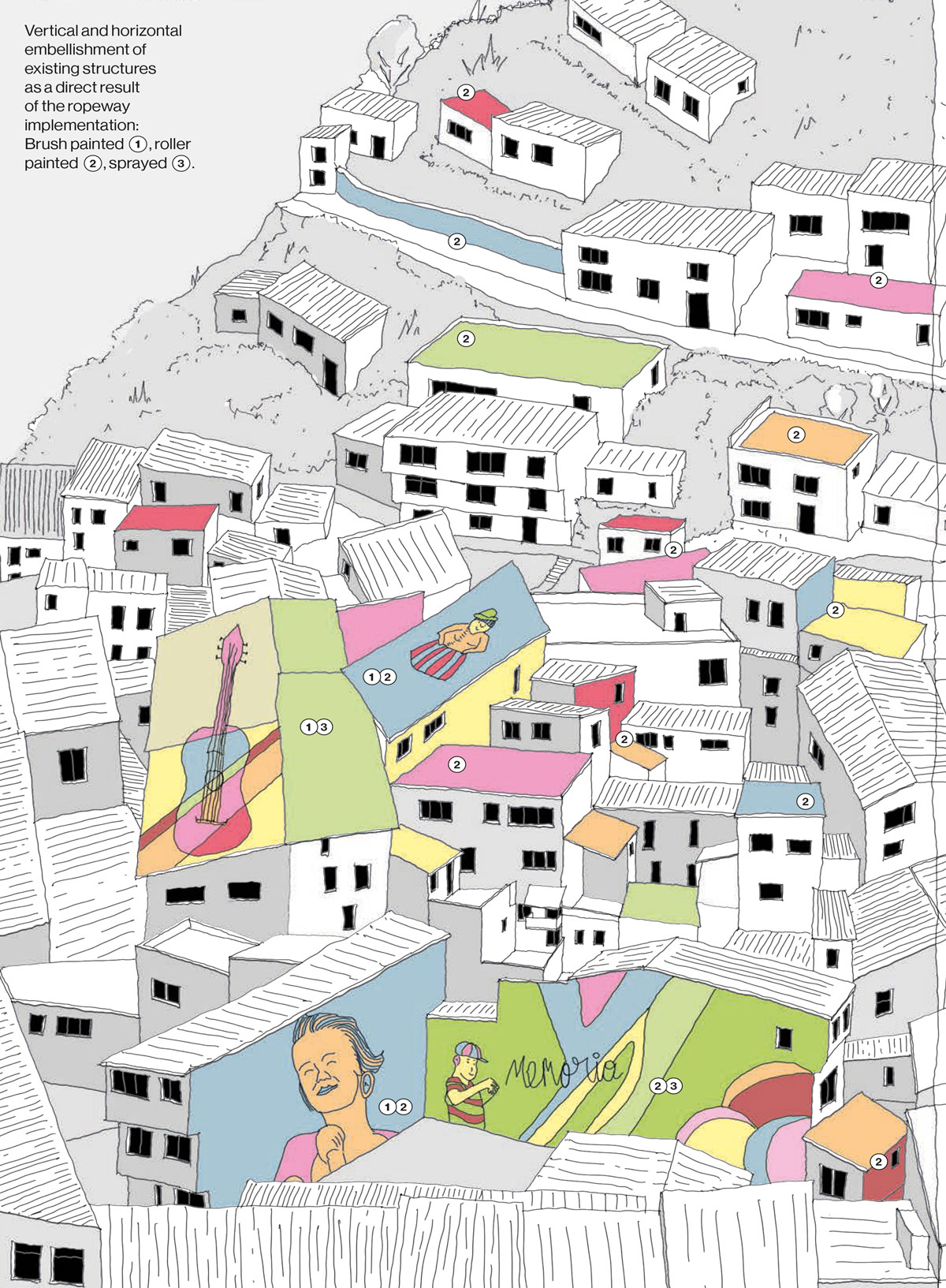
Cities, SI Urban 1/2023
Paradise Cities? How urban cable cars are shaping the cityscape in latin america
For the major cities of Latin America in particular, urban cable cars represent a huge improvement in public transport. They enable people to overcome the often huge altitude differences within and around the cities more easily. Indeed, the bird’seye view also allows completely new design opportunities in the city.
Architecture responding to the new cityscape:
street lamps (1), parasols (2) and public spaces (3). Photos: TU Wien

Advertising
The view from above paints a completely new picture of the respective city and therefore displays large areas that can be used by companies for the placement of advertising. Companies with long-term advertising interests often place advertisements on the cable car supports, so that they can be seen from the passing gondolas.
Walls and roofs of the buildings in the immediate vicinity of the routes are also excellently suited to use as advertising space. For small businesses in the relevant area, there are therefore advertising opportunities on a whole new level.
Indeed, particularly in the political context, the modern installations that are often used daily by thousands of passengers are ideal for advertising. Hand-painted advertising materials or posters are often put up for the latest elections. These now carefully bridge the gap to the digital space by referring to the relevant websites and digital components of a political campaign through slogans, keywords and hashtags.
The people responsible, who have approved and funded the relevant cable car projects, as well as the operators and designers of the respective systems, are exploiting the new visibility in the urban sphere in order to promote themselves. This advertising can often be found near the stations, on the pillars or on the gondolas themselves.
Embellissement
Making walls and roofs of the existing buildings prettier, as a direct result of implementation of the cable car: paintings (1), colour rolls (2), sprayed (3).

Wall and roof art
The creative design of the walls and roofs of buildings in the area of the cable car route sometimes arises from the personal motivation of residents, property owners or local artists. These people use the available spaces for example to raise awareness of grievances in respect of animals, women‘s rights or the environment.
Additionally, artists are also commissioned by the respective local authorities to make the area of the cable cars prettier. For example, the district of Itzapalapa in Mexico City commissioned 50 artists for this purpose. According to local residents, the urban cable car passengers enjoy the new look of the surrounding buildings – the crime rate is even said to have fallen.
Spatial modifications
To keep up with the progressive mobility of modern cable cars, there are often architectural modifications in cities to aid integration of the tracks into the cityscape. Many street lamps have been erected in the Latin American cities, for example, which should also ensure greater safety on the roads, as do the new modes of transport.
In the example of Mexico City, considerable modifications can already be seen in the design of buildings in the immediate vicinity of the cable car route. The architects want passing passengers to be able to admire their best constructions.
Yet the cityscape is also influenced by the existing challenges that come with urban cable cars: there are consequently many parasols and visual screening features that residents use to protect their own privacy.
Conclusion
The new perspective from above brings the city many unexpected and positive side effects. The urban sphere benefits from sociocultural and economic advantages. People are thus given a new platform to express themselves artistically and to make the journey prettier for passing passengers. At the same time, the political and economic stakeholders on the ground benefit from new advertising space that directly address the population travelling on the cable car.
Nonetheless, individual measures are so far still being used to resolve the problem of privacy in the affected areas. In the long term, however, a way will doubtless be found to resolve the problem directly on the part of the operators. Overall the residents benefit strongly from the new mobility concept.







